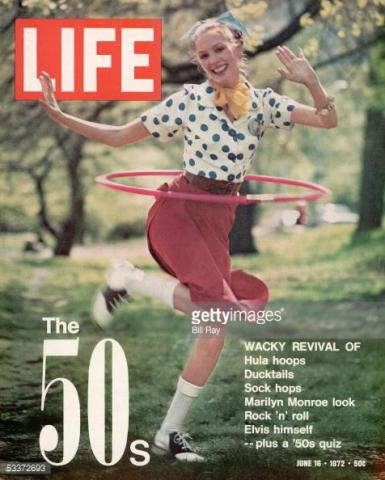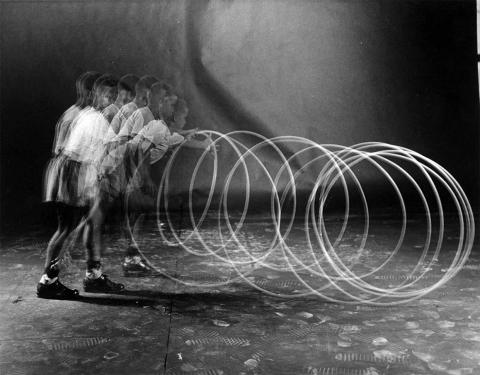


A hula hoop is a toy hoop that is twirled around the waist, limbs or neck. The modern hula hoop was invented in 1958 by Arthur K. "Spud" Melin and Richard Knerr, but children and adults around the world have played with hoops throughout history. Hula hoops for children generally measure approximately 70 centimetres (28 in) in diameter, while those for adults measure around 1 metre (40 in). Traditional materials for hoops include willow, rattan (a flexible and strong vine), grapevines and stiff grasses. Today, they are usually made of plastic tubing.
The hula hoop gained international popularity in the late 1950s, when a plastic version was successfully marketed by California's Wham-O toy company. In 1957 Joan Anderson brought back a bamboo "exercise hoop" from Australia, and came up with the name Hula Hoop at a dinner party. Her husband showed it to Arthur "Spud" Melin and they agreed on a gentleman's handshake that they would have a share of any profits (the company cut her out, and they got nothing).
Richard Knerr and Arthur "Spud" Melin, manufactured 1.06-metre (42 in) hoops with Marlex plastic. With giveaways, national marketing and retailing, a fad begin in July 1958: twenty-five million plastic hoops were sold in less than four months, and sales reached more than 100 million units in two years. Carlon Products Corporation was one of the first manufacturers of the hula hoop; during the 1950s, Carlon was producing more than 50,000 hula hoops per day. The hoop was inducted into the National Toy Hall of Fame at The Strong in Rochester, New York, in 1999.
The hula hoop craze swept the world, dying out again in the 1980s, but not in China and Russia, where hula hooping and hoop manipulation were adopted by traditional circuses and rhythmic gymnasts.
